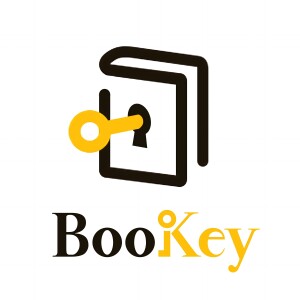
- Podcast Features
-
Monetization
-
Ads Marketplace
Join Ads Marketplace to earn through podcast sponsorships.
-
PodAds
Manage your ads with dynamic ad insertion capability.
-
Apple Podcasts Subscriptions Integration
Monetize with Apple Podcasts Subscriptions via Podbean.
-
Live Streaming
Earn rewards and recurring income from Fan Club membership.
-
Ads Marketplace
- Podbean App
-
Help and Support
-
Help Center
Get the answers and support you need.
-
Podbean Academy
Resources and guides to launch, grow, and monetize podcast.
-
Podbean Blog
Stay updated with the latest podcasting tips and trends.
-
What’s New
Check out our newest and recently released features!
-
Podcasting Smarter
Podcast interviews, best practices, and helpful tips.
-
Help Center
-
Popular Topics
-
How to Start a Podcast
The step-by-step guide to start your own podcast.
-
How to Start a Live Podcast
Create the best live podcast and engage your audience.
-
How to Monetize a Podcast
Tips on making the decision to monetize your podcast.
-
How to Promote Your Podcast
The best ways to get more eyes and ears on your podcast.
-
Podcast Advertising 101
Everything you need to know about podcast advertising.
-
Mobile Podcast Recording Guide
The ultimate guide to recording a podcast on your phone.
-
How to Use Group Recording
Steps to set up and use group recording in the Podbean app.
-
How to Start a Podcast
-
Podcasting
- Podcast Features
-
Monetization
-
Ads Marketplace
Join Ads Marketplace to earn through podcast sponsorships.
-
PodAds
Manage your ads with dynamic ad insertion capability.
-
Apple Podcasts Subscriptions Integration
Monetize with Apple Podcasts Subscriptions via Podbean.
-
Live Streaming
Earn rewards and recurring income from Fan Club membership.
-
Ads Marketplace
- Podbean App
- Advertisers
- Enterprise
- Pricing
-
Resources
-
Help and Support
-
Help Center
Get the answers and support you need.
-
Podbean Academy
Resources and guides to launch, grow, and monetize podcast.
-
Podbean Blog
Stay updated with the latest podcasting tips and trends.
-
What’s New
Check out our newest and recently released features!
-
Podcasting Smarter
Podcast interviews, best practices, and helpful tips.
-
Help Center
-
Popular Topics
-
How to Start a Podcast
The step-by-step guide to start your own podcast.
-
How to Start a Live Podcast
Create the best live podcast and engage your audience.
-
How to Monetize a Podcast
Tips on making the decision to monetize your podcast.
-
How to Promote Your Podcast
The best ways to get more eyes and ears on your podcast.
-
Podcast Advertising 101
Everything you need to know about podcast advertising.
-
Mobile Podcast Recording Guide
The ultimate guide to recording a podcast on your phone.
-
How to Use Group Recording
Steps to set up and use group recording in the Podbean app.
-
How to Start a Podcast
-
Help and Support
- Discover

The Power of Individual Freedom: Exploring Milton and Rose Friedman’s Free to Choose
"Free to Choose" is a book written by Milton Friedman, an economist, and his wife Rose Friedman. The book aims to explain the benefits of free-market capitalism and advocate for limited government intervention in economic affairs.
The Friedmans argue that economic freedom enables individuals to pursue their own self-interests, resulting in voluntary exchange and the creation of wealth. They emphasize that economic freedom is essential for political freedom and individual liberties, as it allows people to make choices without coercion or interference from the state.
The book analyzes various economic issues, such as government regulation, taxation, education, welfare, and equality. The Friedmans argue that government intervention often leads to unintended consequences, such as higher costs, bureaucratic inefficiency, and reduced individual freedom.
They advocate for policies that limit government interference in the economy, such as reducing regulations, lowering taxes, and promoting free trade. They also argue that individuals should be responsible for their own well-being, with limited government assistance only for those truly in need.
Furthermore, the Friedmans discuss the importance of education in promoting economic and social progress. They argue for the decentralization of education, giving parents the power to choose the education that best suits their children and promoting competition among schools.
In conclusion, "Free to Choose" is a passionate defense of free-market capitalism and individual liberty. The Friedmans provide a compelling argument for limited government intervention in economic affairs, advocating for policies that promote economic freedom and individual choice.
Chapter 2:the meaning of Free To Choose book"Free To Choose" is a book written by economist Milton Friedman and his wife Rose Friedman. It was published in 1980 and serves as a manifesto for economic and political freedom.
The central theme of "Free To Choose" revolves around the belief that individuals should have the freedom to make economic decisions without interference or coercion from the government. The book passionately argues in favor of the principles of free markets, limited government intervention, and individual liberty as the foundation for economic prosperity and personal freedom.
The Friedmans strongly advocate for free-market capitalism as a means to achieve economic growth, innovation, and progress. They argue that when individuals are free to pursue their own interests and engage in voluntary exchange, it leads to the most efficient allocation of resources and the greatest overall benefit for society.
Throughout the book, the Friedmans discuss various economic concepts and policies, ranging from the implications of government regulation and intervention, the importance of competition in driving economic efficiency, the negative consequences of excessive taxation, and the value of individual choice and responsibility.
"Free To Choose" also delves into the implications of economic freedom on broader political and social issues. The Friedmans argue that a society with limited government interference not only achieves economic prosperity but also promotes personal freedom, political stability, and social harmony.
Overall, "Free To Choose" espouses Milton Friedman's libertarian views on economics and emphasizes the importance of individual freedom and limited government intervention in economic affairs. The book gained significant popularity and helped shape conservative economic thought in the United States and beyond.
Chapter 3:Free To Choose book chaptersChapter 1: The Power of the Market
In this chapter, Milton Friedman introduces the concept of the free market and its inherent power. He argues that voluntary transactions in the marketplace, where individuals pursue their own self-interest, lead to the most efficient allocation of resources and the highest level of satisfaction for individuals in society.
Chapter 2: The Tyranny of Controls
Friedman discusses the negative consequences of government intervention in the economy. He argues that government regulations and controls often result in unintended consequences, including higher prices, decreased quality, and reduced individual freedom.
Chapter 3: Anatomy of Crisis
This chapter explores the causes and effects of economic crises. Friedman argues that most crises are caused by excessive government intervention, such as inflationary monetary policies and excessive regulation. He suggests that a free market system provides a better mechanism for preventing and resolving economic crises.
Chapter 4: Cradle to Grave
Friedman examines the increasing role of government in providing welfare and social security programs. He argues that these programs, while initially well-intentioned, create dependency and reduce individual incentives to work and save. He suggests alternative approaches, such as voluntary charity and privatized social security, that he believes would be more effective.
Chapter 5: Created Equal
In this chapter, Friedman analyzes the concept of equality and the role of government in promoting it. He argues that equality of opportunity is a desirable goal, but that attempts to achieve equality of outcomes through government intervention are misguided and result in the suppression of individual liberty and economic growth.
Chapter 6: What's Wrong with Our Schools?
Friedman critiques the government-run education system and argues in favor of a voucher system. He contends that competition among schools, enabled by vouchers, would lead to better quality education and increased choice for parents.
Chapter 7: Who Protects the Consumer?
Friedman discusses the role of government in protecting consumers. He argues that market competition and individual choices are sufficient to protect consumers from unsafe and low-quality products. He suggests that government intervention often benefits special interest groups rather than consumers.
Chapter 8: Who Protects the Worker?
In this chapter, Friedman examines the role of labor unions and government regulations in protecting workers. He argues that unions can sometimes harm workers' interests by reducing job opportunities and impeding economic growth. He advocates for voluntary associations and competitive labor markets as more effective means of protecting workers.
Chapter 9: The Cure for Inflation
Friedman proposes a monetary policy based on a fixed rule to combat inflation. He argues that discretionary monetary policies can lead to economic instability and recommends a steady increase in the money supply to support long-term economic growth.
Chapter 10: The Tide Is Turning
The final chapter of the book discusses the changing attitudes towards free market principles. Friedman highlights the growing skepticism towards government intervention and the increasing recognition of the benefits of free markets. He concludes by expressing his optimism for the future of economic freedom.
Chapter 4: Quotes of Free To Choose book- "The power to do good is also the power to do harm; those who control power today may not tomorrow; and, more important, what one person considers good, another may consider harm."
- "The great advances of civilization, whether in architecture or painting, in science or literature, in industry or agriculture, have never come from centralized government."
- "There is no solution to poverty except through individual freedom and voluntary exchange."
- "The society that puts equality before freedom will end up with neither. The society that puts freedom before equality will end up with a great measure of both."
- "Underlying most arguments against the free market is a lack of belief in freedom itself."
- "The only way that has ever been discovered to have a lot of people cooperate together voluntarily is through the free market."
- "The great virtue of a free market system is that it does not care what color people are; it does not care what their religion is; it only cares whether they can produce something you want to buy."
- "Inflation is always and everywhere a monetary phenomenon."
- "One of the great mistakes is to judge policies and programs by their intentions rather than their results."
- "The most important single central fact about a free market is that no exchange takes place unless both parties benefit."
More Episodes
 2025-03-13
2025-03-13
 23
23
 2025-03-12
2025-03-12
 17
17
 2025-02-28
2025-02-28
 17
17
 2025-02-25
2025-02-25
 16
16
Create your
podcast in
minutes
- Full-featured podcast site
- Unlimited storage and bandwidth
- Comprehensive podcast stats
- Distribute to Apple Podcasts, Spotify, and more
- Make money with your podcast
It is Free
- Privacy Policy
- Cookie Policy
- Terms of Use
- Consent Preferences
- Copyright © 2015-2025 Podbean.com




